BlueHalo + Eqlipse Technologies combine forces to provide global defense technology support
BlueHalo, a company engaged in global defense tech, will acquire Eqlipse Technologies (Eqlipse), a provider of differentiated products and solutions to the Department of Defense (DoD) and Intelligence Community (IC).

Bolstered by Eqlipse’s high-end technical talent and suite of products, BlueHalo will deliver enhanced scale and broader capabilities to its customers, accelerating the development and fielding of its advanced defense technologies. The combined entity will have a total employee count of nearly 2,400 across 11 states and annual revenue approaching $1 billion. The transaction is expected to close in Q1 2024.
Current BlueHalo CEO, Jonathan Moneymaker, will lead the combined company.
Since forming in 2019, BlueHalo has established itself as a trusted partner to the DoD and IC, serving as the prime contractor awardee on top-priority contracts such as the USSF’s recent $1.4 billion Satellite Communication Augmentation Resource (SCAR) program.
BlueHalo is the first to successfully operationally field High Energy Laser Counter- Unmanned Autonomous Systems (C-UAS) with its LOCUST system and has become a leader in Radio Frequency (RF) C-UAS, delivering its 1,000th system last year.
From laser communication payloads to critical Class-A satellite subsystems, BlueHalo has more than 260 systems flying on-orbit. Eqlipse offers a deep portfolio of solutions delivering industry-leading capabilities, spanning full spectrum cyber and signals intelligence (SIGINT) engineering, Electronic Warfare (EW), digital operations and identity management, and cutting-edge R&D.
Eqlipse will further enhance BlueHalo’s ability to provide next-generation products and solutions to its customers by adding world-class EW products and capabilities, adding significant depth within the company’s current cyber franchise, expanding BlueHalo’s best-in-class suite of Open Source Intelligence (OSINT) offerings, and augmenting the combined entity’s advanced R&D capabilities.

Upon completion of the transaction, BlueHalo will hold nearly 90 patents, employ more than 200 PhDs in relevant fields, and offer 20 product lines featuring industry-leading solutions across four key mission areas: Space, C-UAS and Autonomous Systems, Cyber and EW, and Artificial Intelligence (AI) — all stated priority areas for the DoD.
The company will remain headquartered in Arlington, Virginia, and will continue to invest in bringing the latest technological advancements to the defense industry.
BlueHalo and Eqlipse are both portfolio companies of Arlington Capital Partners, a Washington, D.C.-area private investment firm specializing in government regulated industries.
“The only constant in global defense is the certainty that threats will continue to evolve, new battlefields will emerge, and the landscape will change,” said Jonathan Moneymaker. “Combining BlueHalo and Eqlipse–both with a shared passion for pairing innovative technology with customer intimacy– creates an enhanced organization with the proven ability to deliver on some of the most complex and challenging problems our customers face in these uncertain times. This acquisition squarely catapults us to the forefront of the industry, providing additional size and scale, and solidifying the company’s position as the top alternative to the largest government contractors. It furthers our ability to drive unbridled, rapid prototyping and innovative work our customers have come to rely on without the bureaucratic obstacles, which typically slow development and inflate budgets.”
“I’m incredibly proud of what we have been able to accomplish to date with Eqlipse and am excited for the many benefits this combination will provide for both our employees and our customers,” said Dennis Kelly, CEO of Eqlipse. “With enhanced scale and capabilities, BlueHalo will remain dedicated to providing the rapid innovation needed by our customers and delivering a protective ring around everything we hold dear.”
“Unifying BlueHalo and Eqlipse’s capabilities will accelerate our development of new technologies for our defense and intelligence customers to a pace that others cannot match,” said David Wodlinger, a Managing Partner at Arlington Capital Partners. “The strategic combination of BlueHalo and Eqlipse creates a scale of innovation that establishes the combined company as one of the preeminent defense technology platforms in the industry.”
General Atomics awarded SDA optical comms terminals contract
General Atomics Electromagnetic Systems (GA-EMS) was recently awarded a contract from the Space Development Agency (SDA) to demonstrate the capabilities of the company’s Optical Communication Terminals (OCTs) hosted on GA-EMS’ GA-75 (75 kilogram class) spacecraft while in LEO.
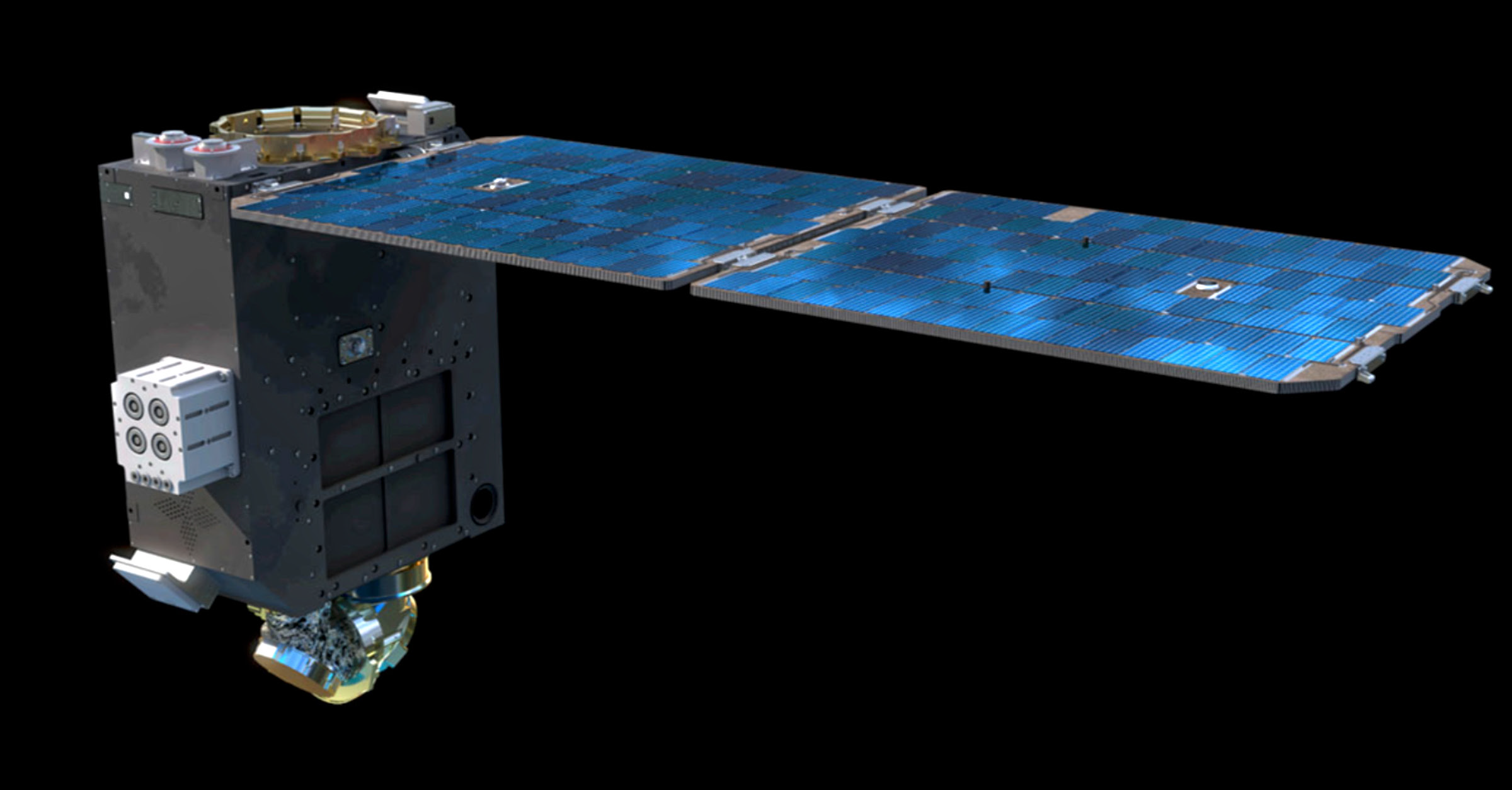
GA-EMS is designing and building two OCTs to provide robust space-to-space communication in a degraded environment and establish and maintain links to meet SDA standards and requirements.
The OCTs can support a vast network of satellites, data and information sharing, and collective on-orbit computing resources to support customer and mission requirements.
The OCTs will be integrated on two GA-EMS GA-75 spacecraft. The GA-75 is a resilient, modular, and configurable half- ESPA bus design with capabilities to support a variety of communications and Intelligence, Surveillance, and Reconnaissance (ISR) payloads and missions.
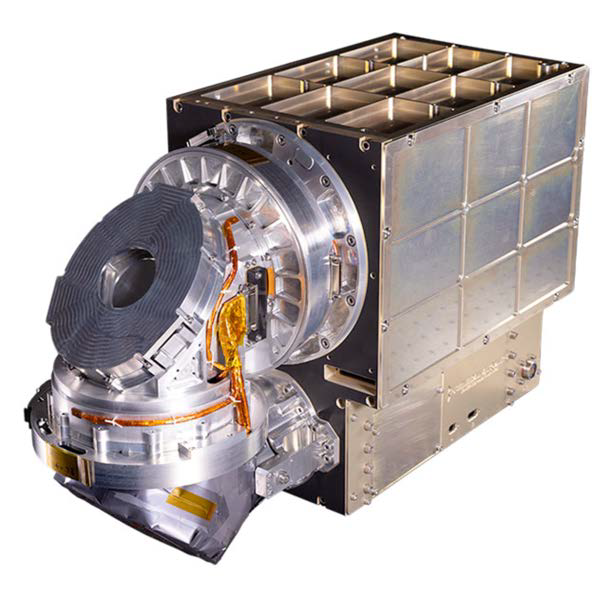
The GA-75 is a commercially available platform that utilizes standard payload interfaces to enable seamless integration and mission-ready delivery times. It is also compatible with multiple launch vehicles and can package two spacecraft per ESPA port or fill a single ESPA port depending on mission payload size.
“We’re excited to continue working with SDA and look forward to demonstrating our OCT capability developed, built, and tested by GA-EMS, and integrated on GA-EMS-designed and built spacecraft,” said Scott Forney, president of GA-EMS. “This contract supports the deployment of next generation optical communication technologies that will provide faster, more secure, higher fidelity transmissions, and greater resiliency to ensure 24/7 connectivity from the Earth to space.”
General Atomics Electromagnetic Systems (GA-EMS) Group is a global leader in the research, design, and manufacture of first-of-a-kind electromagnetic and power generation systems. GA-EMS’ history of research, development, and technology innovation has led to an expanding portfolio of specialized products and integrated system solutions supporting aviation, space systems and satellites, missile defense, power and energy, and processing and monitoring applications for defense, industrial, and commercial customers worldwide.
GEOST to provide missile warning sensor for Sierra Space satellites in the SDA Tracking Layer
GEOST, LLC (GEOST), a LightRidge Solutions company, will provide the mission payloads as a subcontractor under prime awardee Sierra Space for the Space Development Agency’s (SDA) Tracking Layer Tranche 2 missile warning and tracking satellites.

The Tracking Layer Tranche 2 satellites are a critical component in SDA’s proliferated warfighting space architecture to counter hypersonic and advanced missile threats.
GEOST will provide Sierra Space with 16 of the company’s Mercury missile warning and missile tracking payloads and two of its Phoenix fire control payloads for multi-domain missile defense. The company will also be delivering mission processing solutions integrated with its payloads.
GEOST’s design leverages company internal research and development investments in leading-edge sensor designs and advanced algorithms, as well as investments to significantly expand its production capacity. It builds on existing GEOST expertise developing and building high-performance, multi-orbit payloads for classified and unclassified missions that are affordable, low weight and low power, with integrated on-orbit processing and ground-based infrastructure.
“The SDA Tracking Layer Tranche 2 award opens new avenues for GEOST including applicability to other space-based persistent infrared missions in low- and medium-Earth orbits (LEO / MEO). The contract represents a strategic win for Sierra Space and GEOST as we continue to scale and expand into new mission areas,” said Bill Gattle, CEO of LightRidge Solutions. “LightRidge is proud to be part of SDA’s transformational architecture that will provide critical capability to the warfighting infrastructure. This award continues LightRidge’s dedication to delivering impactful and differentiated capabilities for integral U.S. National Security Space missions.”
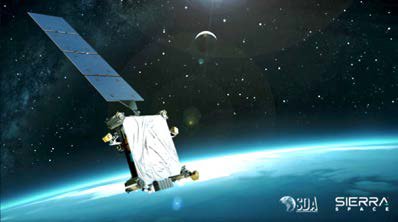
“The SDA Tracking Layer Tranche 2 award opens new avenues for GEOST,” said Rich Gray, President of GEOST, “including applicability to other space-based persistent infrared missions in low- and medium-earth orbits.”
GEOST, LLC, a LightRidge Solutions Company, designs and produces affordable, high-performance optical sensor systems for critical National Security Space missions. The company has served its core DoD, Intelligence Community, and industry customer base since its founding with a team of around 200 high performing professionals based in Arizona and Northern Virginia.
LightRidge Solutions brings leading capabilities that address demanding national security space and defense needs, including advanced space payloads and on-orbit processing technologies, multi-orbit space domain awareness and protection systems, laser communications and airborne survivability systems, as well as mission autonomy software. LightRidge’s innovative and highly reliable concept-to-production systems provide high performance at lower costs and shorter delivery schedules than traditional systems. These include world-class optical and laser sensors, surveillance systems, and data-processing electronics, which are enabling the transition to more resilient and affordable space architectures for the U.S. military and intelligence communities, as well as select commercial and international customers.
Kratos wins million$$$ award for USSF SATCOM C2 system
Kratos Defense & Security Solutions, Inc. (Nasdaq: KTOS) is the single recipient for the Command and Control (C2) System Consolidated (CCS-C) Sustainment and Resiliency (C-SAR) indefinite-delivery/indefinite-quantity (IDIQ) contract from Space Systems Command (SSC) with a maximum value of $579 million, if all options are exercised.

The start date is December 1, 2023, with options going to May 31, 2032. Future task/delivery orders will be issued to support operations, sustainment, or enhancements of the CCS-C and related systems.
C-SAR ensures secure and integrated communications for the U.S. MILSATCOM requirements. CCS-C provides consolidated MILSATCOM tracking, telemetry and command capability for SSC, for on-orbit and anomaly resolution operations.
The CCS-C program develops the C2 system for most U.S. MILSATCOM systems, including the Defense Satellite Communications System, Milstar, Wideband Global SATCOM and Advanced Extremely High Frequency satellites.
Delta 8 consists of three active duty squadrons headquartered at Schriever Air Force Base, Colorado: 2nd and 4th Space Operations Squadrons and 50th Operations Support Squadron.
The C-SAR contract provides sustainment, post-production development services and enhancements for the CCS-C system. C-SAR provides satellite and communication system products, hardware and equipment in support of the SSC’s mission to develop, acquire, equip, field and sustain lethal and resilient space capabilities.
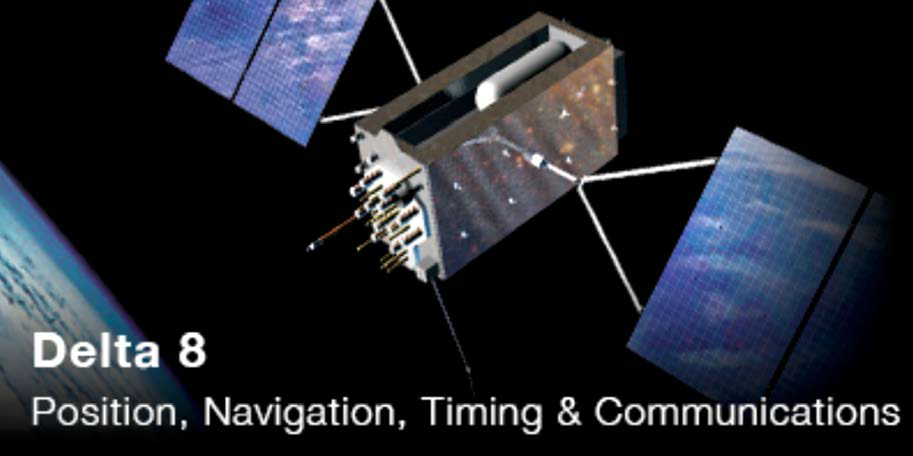
Phil Carrai, President of the Kratos Space, Training and Cyber Division, said, “Through CCS-C, Kratos supports the U.S. military with the satellite-based services to achieve their mission. This is an important recompete win for one of our largest space domain contracts. Kratos is one of the few companies that can provide a mix of cutting-edge technology and expertise to strengthen global capabilities of the U.S. Space Force, other branches of the U.S. military and international allies.”
“C-SAR is critical to delivering C2 services required by the warfighter and Kratos will maintain mission-specific requirements without risking gaps in operations,” said Larry Lind, Senior Vice President of Kratos Federal Space. “These services and solutions for the U.S. Space Force are fundamental to addressing today’s competitive domain.”
SSC selects Lockheed Martin for early design of next MUOS satellites
The U.S. Space Force’s Space Systems Command recently awarded Lockheed Martin [NYSE: LMT] a firm-fixed-price contract valued at $66 million for risk reduction activities and early design work in support of the Mobile User Objective System (MUOS) Service Life Extension (SLE) program.
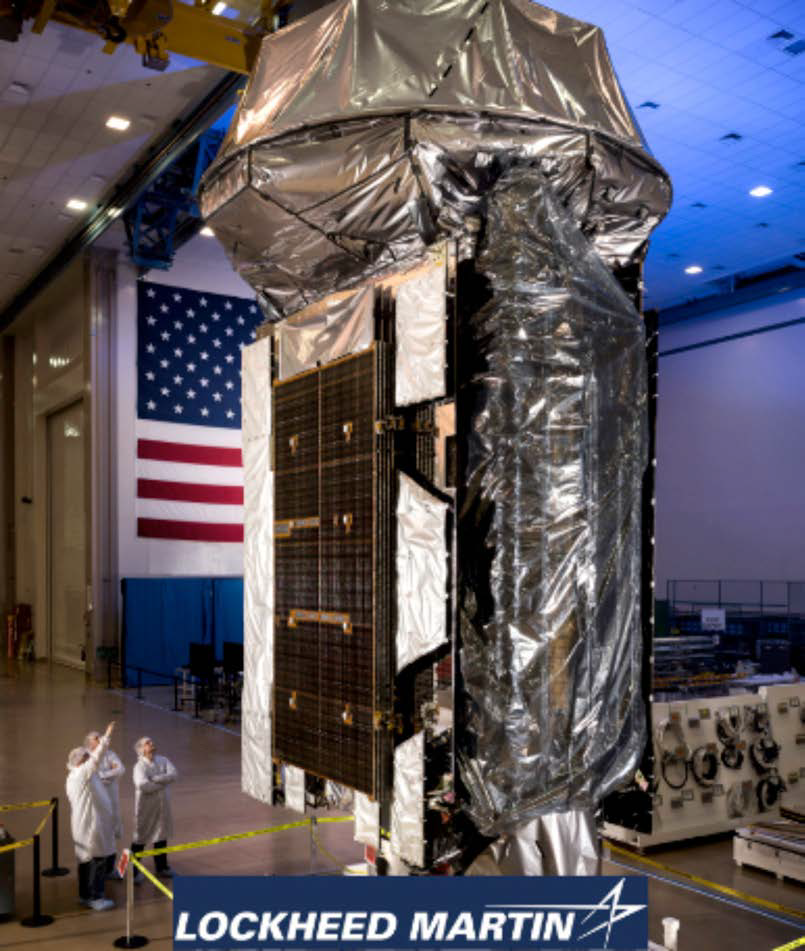
MUOS is a satellite-based network that provides the U.S. military with ultra-high frequency (UHF) voice and data communications. The MUOS constellation consists of four active satellites and one on-orbit spare, all built and operated by Lockheed Martin.The SLE program will extend this advanced capability into the 2030s by adding two more MUOS satellites to enable the continuation of four fully operational satellites, with spares supporting legacy UHF channels.
MUOS SLE Phase 1 is a one-year base period with potential for an additional six-month option. The base period is intended to reduce risks through early design activities in support of the Phase 2 acquisition for final design and production of two space vehicles. MUOS SLE Phase 2 is a separate competition for final design, production, spacecraft testing and delivery to the U.S. Space Force for launch by 2030.
MUOS provides the advanced Wideband Code Division Multiple Access (WCDMA) waveform, giving warfighters 10 times the communications capacity of the legacy UHF SATCOM system, while supporting interoperability with legacy UHF terminals. In 2017, MUOS was approved for early use and testing, including use during humanitarian response and disaster relief missions, with the system being deemed cyber-survivable and approved for use in warfighting environments in 2019 after rigorous testing.

Most recently, Canada became the first partner nation to successfully access the MUOS Narrowband Global SATCOM System, marking an important international milestone for the program.
“Lockheed Martin revolutionized military communications for mobile forces by developing MUOS, which provides simultaneous, crystal-clear voice, video and mission data that extends connections beyond line-of-sight around the world,” said Joe Rickers, Lockheed Martin Space’s vice president for Connectivity, Transport and Access missions. “This extension effort speaks to the operational effectiveness of MUOS, and as the industry leader in military satellite communications, we are eager to leverage our experience to strengthen the system and ensure the warfighter’s needs continue to be met.”



